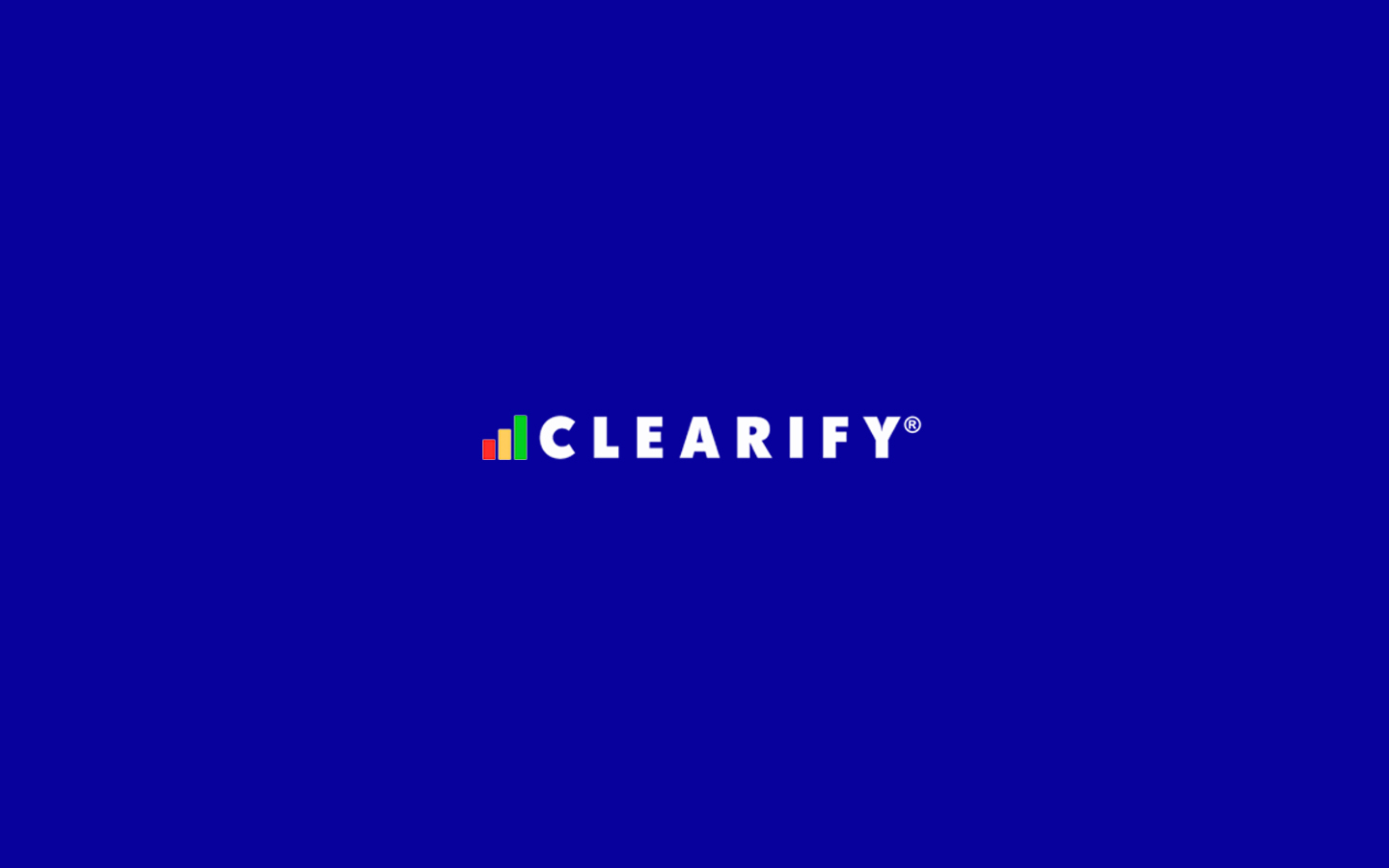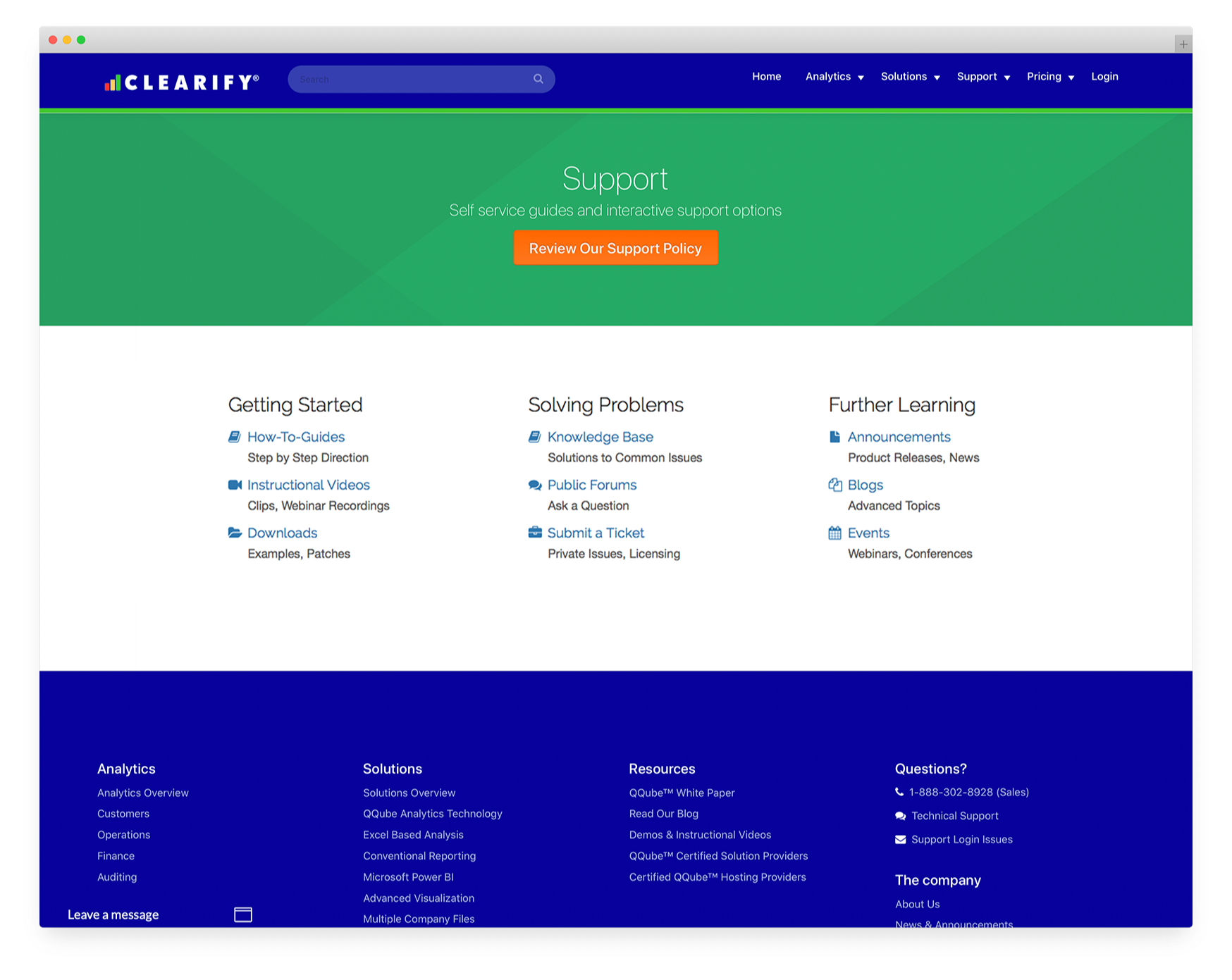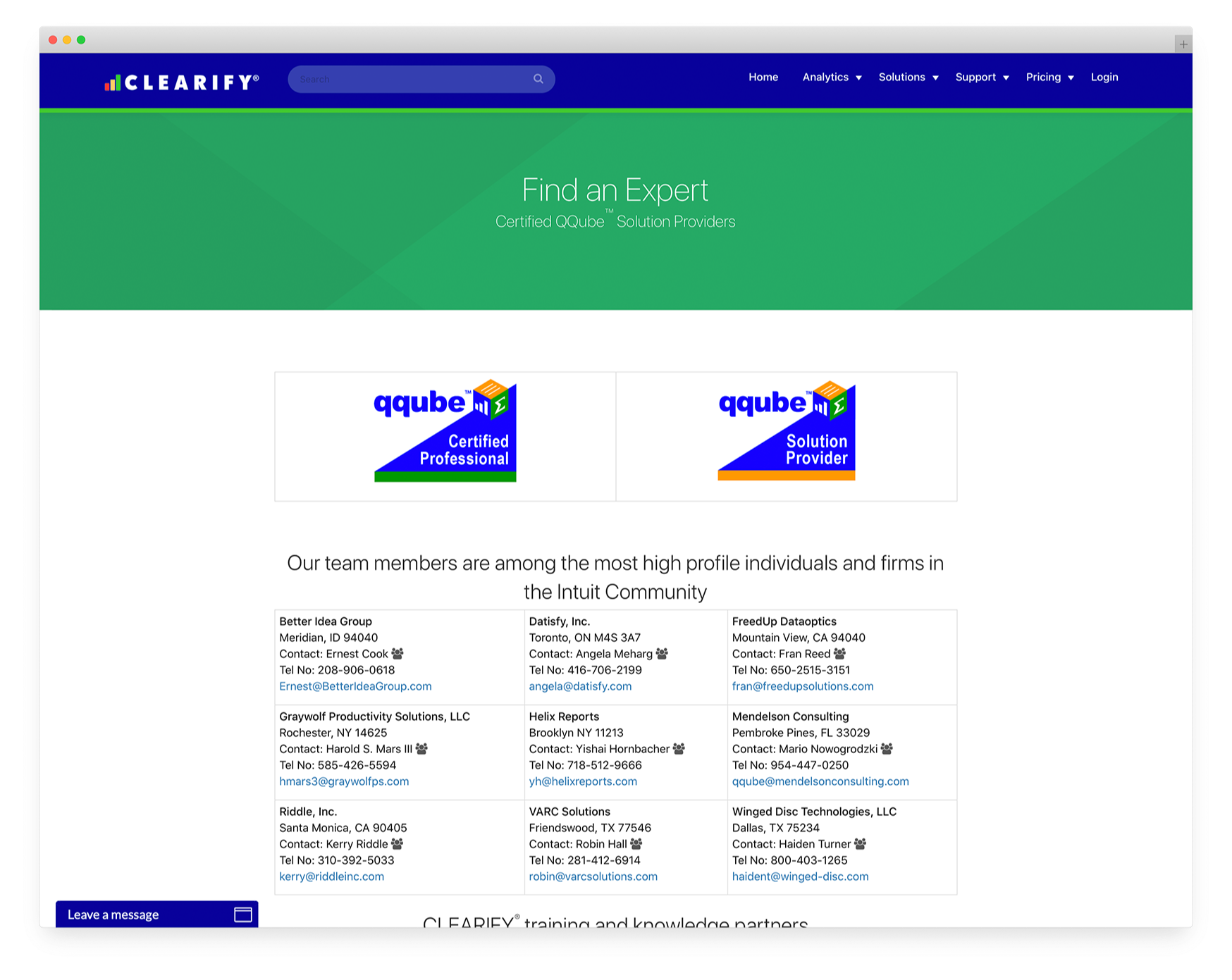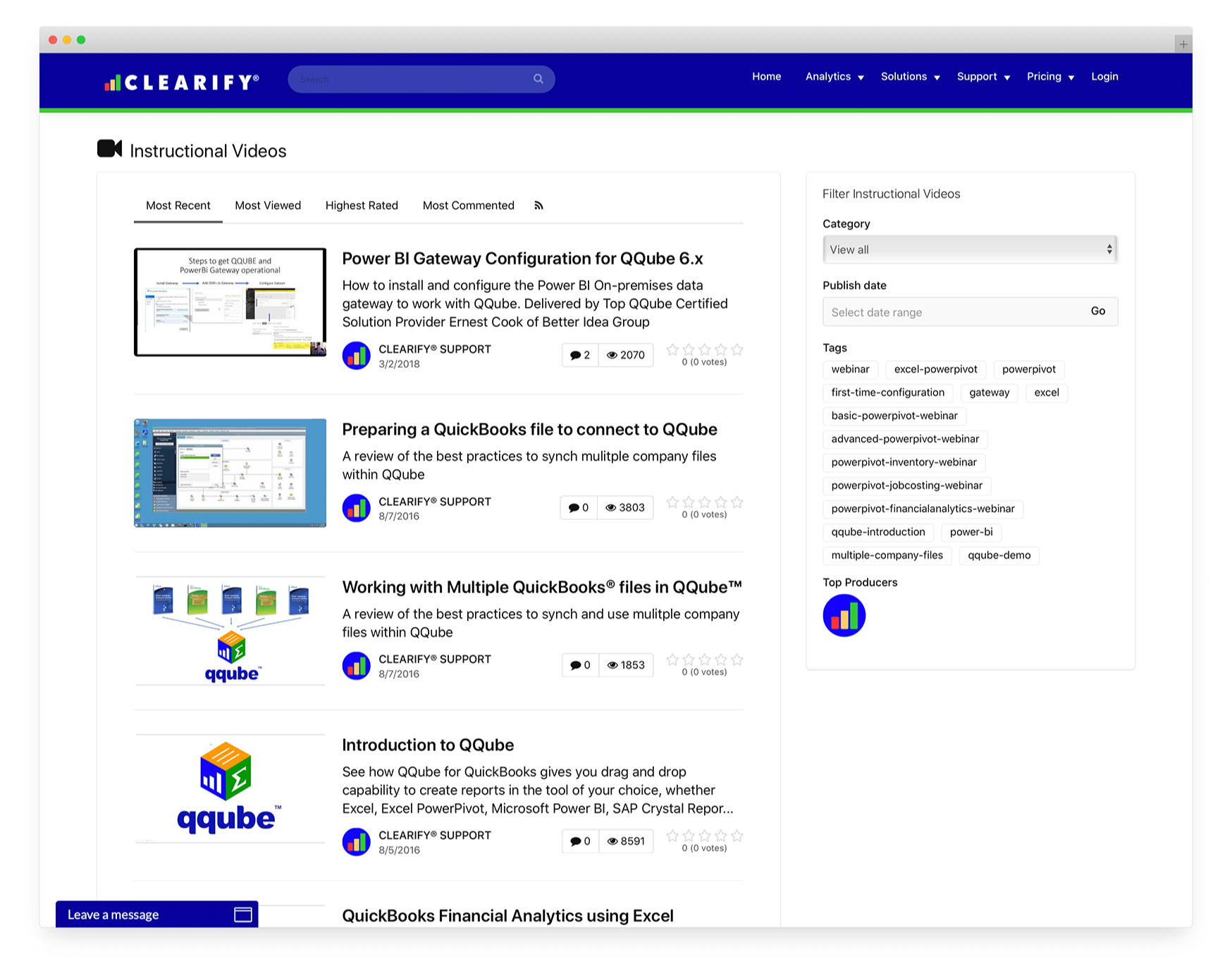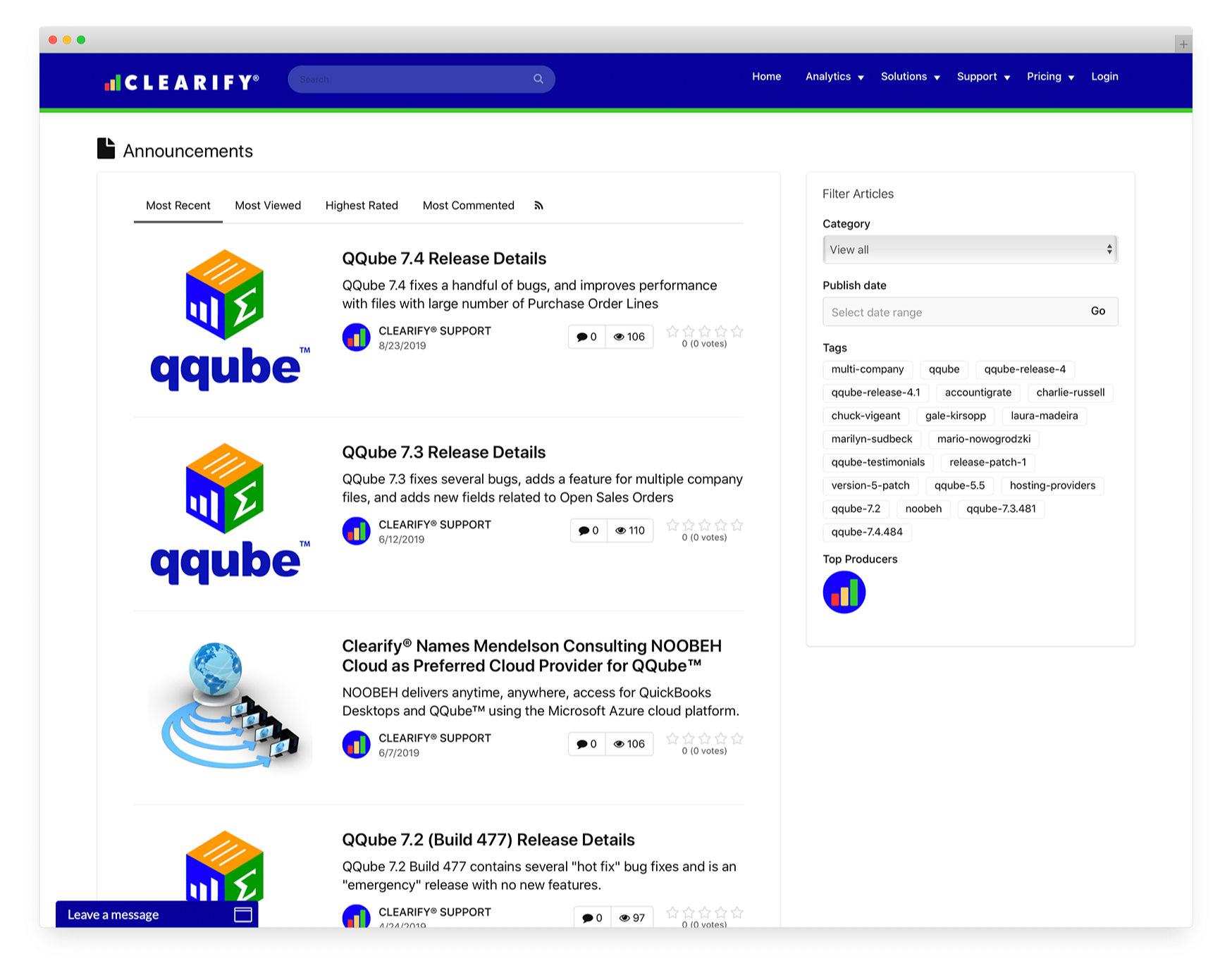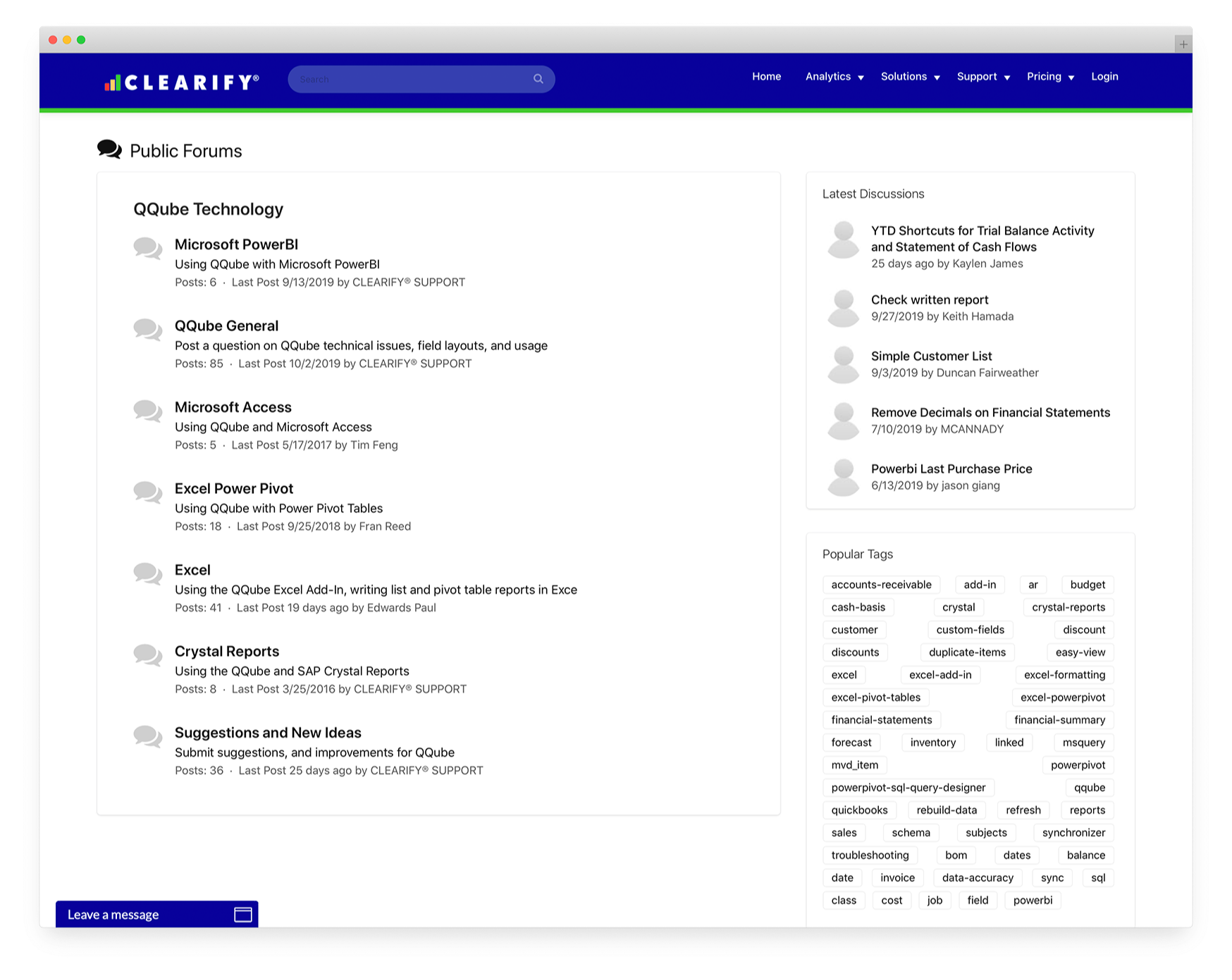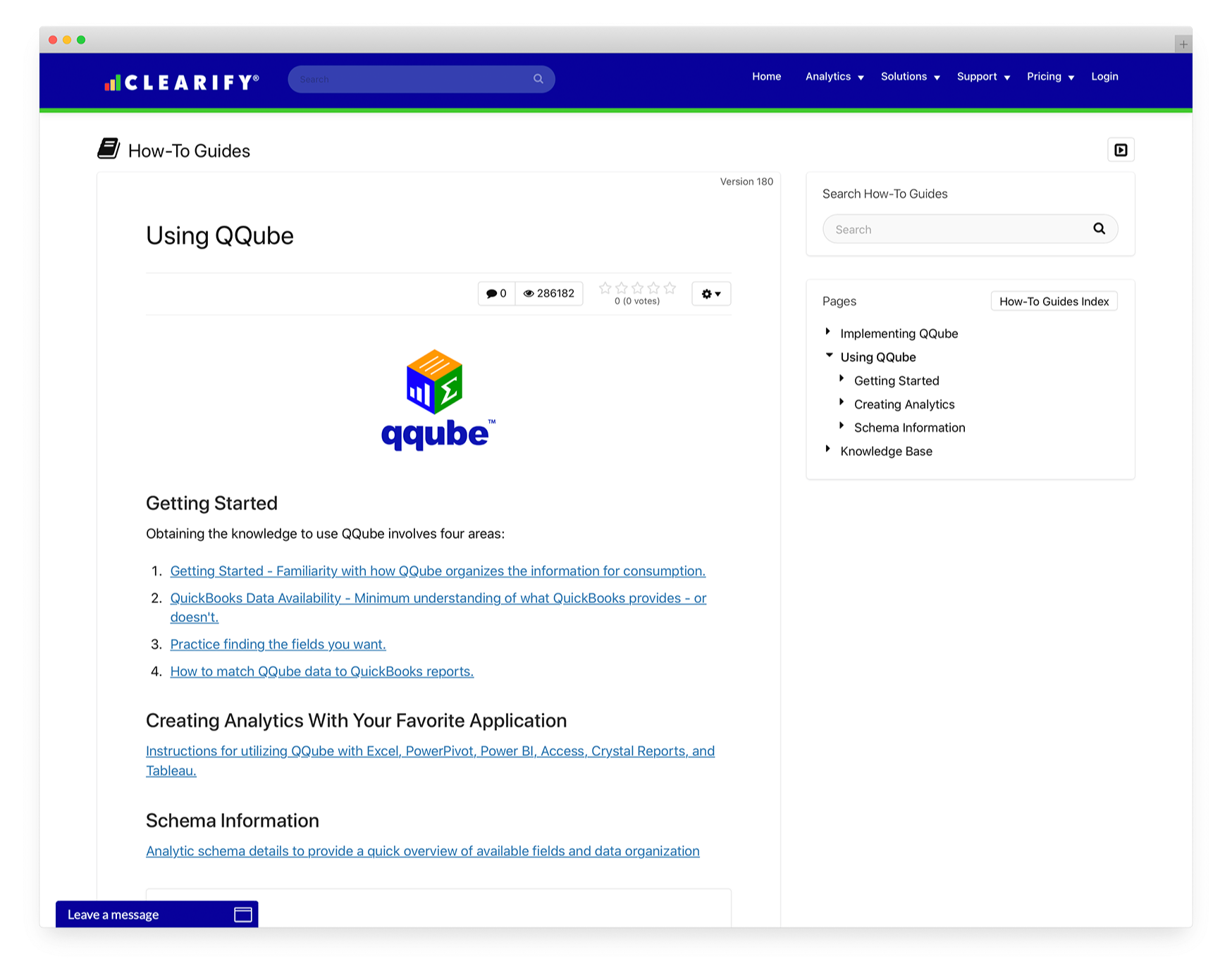Chuck Vigeant, M.Ed. is founder and Managing Partner of CLEARIFY®, a small business analytics and business intelligence software company based in Houston, Texas with a worldwide customer base.
In this guest post he explains how his company cut their support costs by shifting to Axero.
Growing a business is not about taking a singular leap. It’s about making incremental changes. Every month, you take small steps to enhance customer value and the bottom line. You develop strategies to acquire and support customers, assess product and service margins, and determine cash flow outcomes. Our company exists to make these kinds of decisions easier.
What we do.
Our core business analytics technology is available as a downloadable desktop application to use with self-service business intelligence tools, and our Solution Provider network provides custom dashboard and reporting services.
We multi-task as a business. For our small team, this means delivering product improvements and innovative ideas, while simultaneously doing what it takes to acquire and serve long-term customers.
Why phone and email weren’t serving our clients.
Many of our customers aren’t the forum, chat, Twitter types. They’re traditional finance and operations folks who prefer personal emails and phone calls. Our team did their best to accommodate customer requests, but I knew we could use technology to streamline the process.
I discovered the following pain points:
- One-off support kept us from innovating. Time spent on phone support and email affects the resources needed for product innovation. It also keeps us from inventing scalable business analytic solutions.
- Threadlocks. Support requests often got lost in email. The email would go to one person, and our team would cc others. Threads got ugly and became impossible to detangle.
- Phone tag. The biggest waste of time and money is leaving messages, missing call-backs, waiting on hold, and getting lost in phone extension hell.
- Answering the same questions repeatedly. A high percentage of help desk issues are repetitive. Answering the phone to just point at a document is not very efficient.
- Lack of availability. Customers and prospects want answers on their timetable, not ours. Many of our customers want self-serve solutions, especially if they’re working with our technology after normal business hours, or are in different time zones.
- Erroneous verbal translation. If I say the word chair, one person thinks blue sofa, while another thinks bar stool. Documentation without images leaves communications open to interpretation.
I researched every online support system.
I wanted to nurture our customer community while also delivering useful technology that pushed the envelope. Here were the pros and cons of traditional solutions based on my research.
-
Help desk software.
Pro: Comes with cases and other features out of the box.
Con: Very narrow in scope. Didn’t give us any more interaction than email would. High-end products were very expensive, for little gain. -
Standalone wikis and forums.
Pro: The web was perfect for the kind of support our customers really needed. Many support products had standalone tools like Wikis and Forums. Some offered videos, some offered downloads, some offered cases, some offered Wikis.
Con: I didn’t want 10 tools and logins. I wanted one. -
Community software.
Pro: Great for rock stars and the NFL.
Con: Not so great for business users. -
Proprietary platforms like SharePoint and Jive.
Pro: Lots of features.
Con: Difficult to navigate and way too expensive to customize. Each implementation would have required months of work from a consultant who specialized in a proprietary platform.
Why Axero?
I wanted to:
- Use self-service tools in multiple mediums
- Create and manage public content without needing a programmer
- Provide a single, secure community where our staff, customers, and solution providers could interact
Axero gave us the tools to meet our needs.
How we engineered customer delight.
Axero was easy to customize. Our goal was for customers to want to use it because they found it useful.
Here’s how we engineered customer delight:
- Create useful content. People will visit any site once. But what keeps them coming back is content that is both relevant and fresh. This includes not only public content, but internal standard operating procedures and intranet documents that can be updated over time.
- Add images and videos. A picture is worth a thousand words. A video is worth even more. We use Axero to quickly add visual representations and videos in cases, documents, and blogs. (We also recommend a product called SnagIt to quickly capture and annotate screenshots.)
- Support experiential learners. One of the most surprising outcomes in the rollout of our support community was seeing the number of people who had viewed our videos, some of which were over an hour long. Some learn visually, and others experientially. Creating wikis as how-to guides, recording instructional videos, and making available downloadable examples created a multi-faceted customer self-serve experience.
- Add a personal touch with blogs. Wikis are great for knowledge-base documents, how-to guides, and product details. Blogs add a personal touch about the use of our products, and information about trends in our industry.
- Chat in real time with screenshots. We chat with our customers in real time. Beats the heck out of waiting on hold, or not being available for a call back.
- Forums and cases. Forums are one of those traditional means of getting answers from multiple sources. They’re public so others can benefit. There are also times when sensitive information can be kept private. We use the case mechanism for that. It lets customers ask questions in private.
- Tie product reports directly to the community. We can automatically create a case from our product to Axero. When customers click on a “log error” message, they can either visit the right knowledge base article in the support community, or click to automatically create a case. The case has all the details included so any one of our staff can respond.
The outcomes, so far:
Axero has been a big leap forward for our business.
- One article saves hours, helps dozens of people. We have support down to a science. We can create content, or modify it in real time, and deliver it in a variety of mediums, for both on-demand and self-serve customers. If someone has a problem, we can just send them to the correct content in seconds. In fact, we support 40 percent more people at about 60 percent of the effort. I call it innovation savings. Money that is saved from routine help-desk operations is now funneled to research and innovative development.
- Service delivery efficiency. We provide product sales, self-serve support, assisted help for a price, and custom solutions. We use Axero to deliver all four. For custom solutions involving multiple staff and customers, we can create specs and attach the final product in one place. Everyone can access it from any device, anytime.
- More content = more organic leads. We expect to double the number of leads we receive from direct search engine traffic, thanks to the quality of our SEO-rich customer support content, which is now integrated with our website.
So, you want to launch a support community?
Here’s my advice to others:
- Play with it. See what’s possible. Be open. If you’re thinking of implementing a customer support solution like Axero, I recommend just trying it. You’ll need to use it so you can get some vision for how it can work for you and your business.
- Read case studies. Look for examples of what other businesses have done with this kind of software. This will also help you to envision the right way to implement it for your own business and your use case.
- Consider combining your website with your support community. I recently combined our business website with the community support tools, all using Axero. I believe this is the wave of the future. You can unite users, support personnel, and outside experts. We now have one communication entity with a single brand and operational presence. See what we built with Axero.

